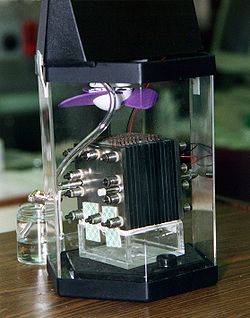1. It saves money (a lot of money): PC power management software can cut energy costs by $20-60 dollars per PC per PC, which can translate to six- and seven-figure annual savings for large enterprises. For many organizations, this can mean a 5-15 percent reduction in overall, organization-wide energy consumption.
2. It’s the right thing to do: Fifteen PCs can generate as much carbon emissions as a mid-size car each year. Implementing effective PC power management strategies in your enterprise provides a way for your business to do its part in helping the environment.
3. It’s not easy being not green: In recent years, news coverage has exposed deep holes in many company sustainability initiatives, raising concerns about high-cost infrastructure changes and the validity of overseas carbon offset programs. Replacing office equipment can be time- and cost- intensive. But making your existing equipment more energy-efficient is a fast and easy process that pays off within months, and makes it difficult being not green.
4. Sustained growth requires sustainable operations: The average PC consumes 588 kilowatt-hours of electricity per year, and wastes almost 400 kWh of that by running at full-power when not in use. Putting a computer in sleep mode during inactive times can cut energy use on average 60-70 percent and up to 90 percent in aggressive scenarios. As your company grows and as demands on your IT and PC networks increase, getting control over energy use will become an important advantage.
5. Attract and retain customers: According to reporting from Verdiem’s current customers, enterprises can cut PC carbon emission by as much as 440 pounds per year per PC. For large enterprises, this can literally mean savings of thousands of tons of carbon each year, simply by managing PC power consumption.
6. Inspire employees: Employees feel a deep sense of pride working in organizations that do their part for the environment. When your employees know their computers are using less than half the power they used to, with no impact on productivity, they’ll know they personally are helping to reduce the company’s carbon footprint.
7. Improved reputation and brand value: According to the BBMG Conscious Consumer Report, the vast majority of Americans not only expect business leaders and marketers to provide environmentally-friendly products, but they’re adamant that those “green friendly” claims are backed up with legitimate practices. Investing in a strong sustainability program (which can be led with Green IT) and communicating the value to your customers and stakeholders can do wonders for your reputation and brand.
8. Be a cost-savings and sustainability hero for your organization: Every year, enterprises waste nearly $4 billion powering devices that are not in use. Curb these expenses and the excess carbon emissions through the introduction of power management ideas and you’ll become a hero for your organization on both fronts: sustainability and cost-savings.
9. Lower exposure to energy prices: Energy sales are expected to grow 50 percent worldwide by 2030. By reducing the amount of power required to operate your business, you’ll mitigate risk from factors well outside of your control.
10. Energy-efficient IT is high performance IT: IT equipment can account for nine percent of all energy consumed by businesses- the third-largest source of power for the commercial sector. Putting power management policies in place is the easiest way to control power consumption across your network.

.jpg)
